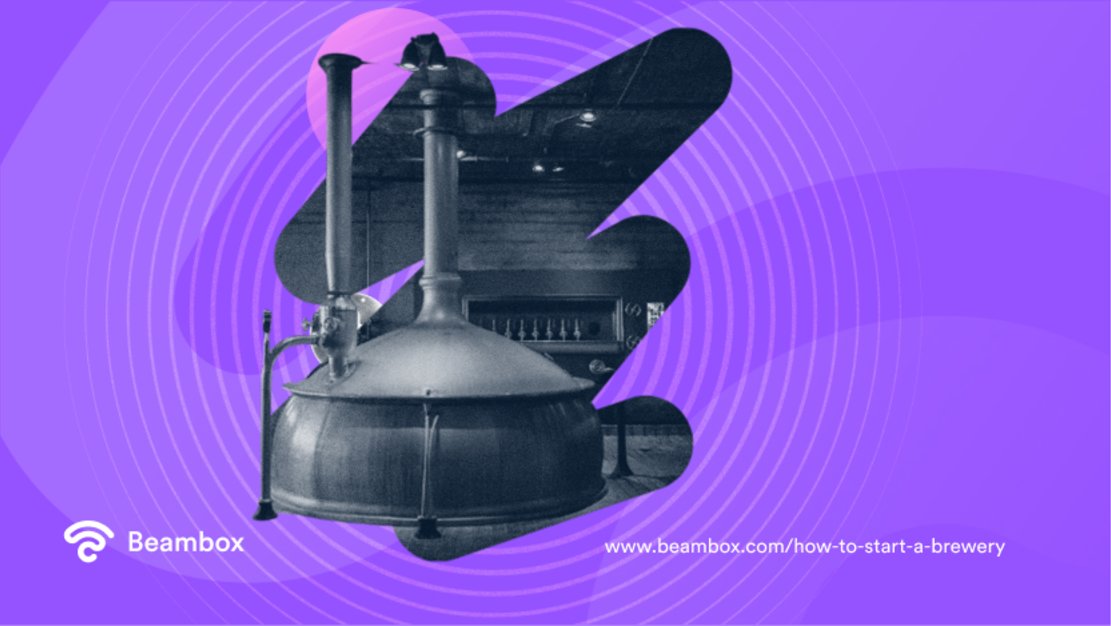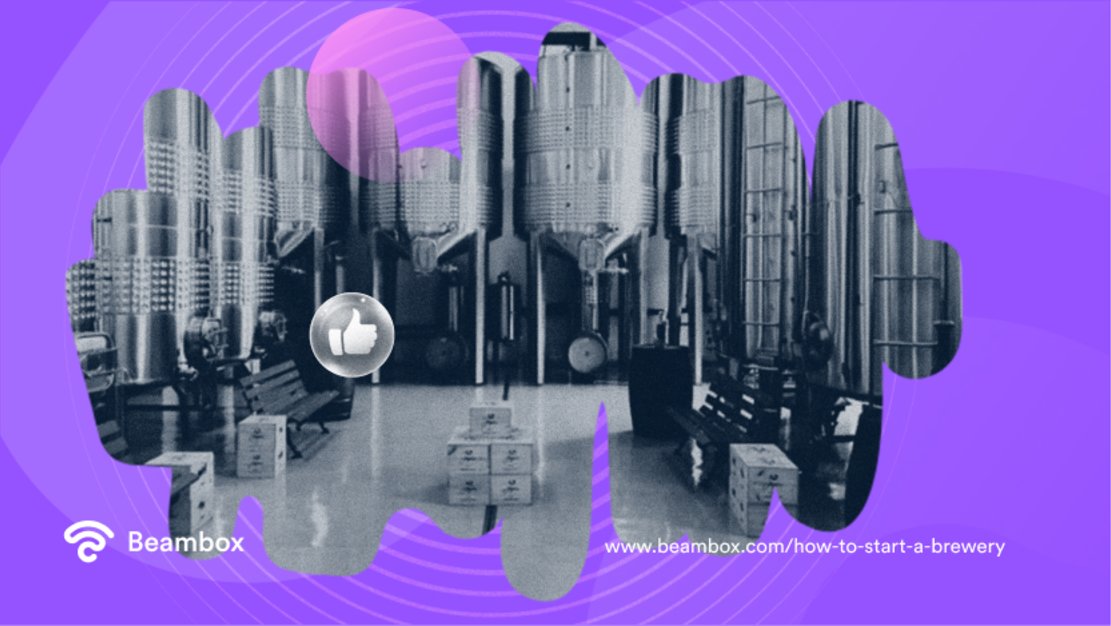Are you wondering how to start a brewery? Then you are in the right place. Starting a brewery is the dream of many beer lovers. However, it is not an easy venture. You need planning and commitment to make it happen. This industry has a lot of competitors, and standing out can be challenging.
This article will show you the steps to start a brewery. Moreover, you’ll learn what factors to consider regarding financial planning. Are you ready?

Steps To Start a Brewery and Being Successful
Starting a brewery is much more than brewing good beer because it’s a business. It has to make money and make people happy. To succeed with your venture, you’ll need careful planning, research, and execution. This is an overview how to start a brewery successfully.
- Market Analysis: Understand the beer landscape in your area. Who are the big players? What styles of beer are trending? Is there a gap in the market?
- Define your ideal customers: Determine who you’re brewing for. This is fundamental to providing a product that has market demand. Defining your consumer profile will give you an edge.
- Planning: A business plan is how you’ll succeed. It outlines your business objectives, strategies, and financial projections. A good business plan starts with good questions. The point is to anticipate what you need to get the ball rolling.
- Make It Happen: The last step is turning your plans into action. This is about acquiring capital, securing the perfect location, buying equipment, and finally starting to brew.
Let’s dive into the detail of the process.

Step #1 To Start a Brewery: Analyze the Local Market
As with any business, you want to analyze the market first. It is no different when it comes to how to starting a brewery. This step gives you a clear view of the landscape you’re entering. But how do you go about it? There are 3 fundamental steps here.
Study Your Competitor: Who are the key players in your local beer market? What styles of beer do they offer? Are there local craft beer breweries that are popular? An answer to these questions clarifies what competition you’ll face and how to stand out.
Identify Trends: As with any business, the brewery industry follows trends. Understanding what are the macro trend dominating the scene will help you avoid costly mistakes. You can also ride the trend to get attention from your customers.
Market Gaps: The last step is to spot any gap that you can serve. Perhaps there are products or services that you can offer that are currently underserved by your competitors. Positioning yourself in these niches can help you massively.
This analysis will give you useful insights to act on. However, there’s more to do. Let’s keep going, then.
Step #2 To Start a Brewery: Define Your Ideal Customers
The second step of how to start a brewery is to define your ideal customers. Think about it. To succeed, you need people to buy your beer. However, not everyone will have an interest in your product. Therefore, you want to identify your targets and reach out to them to make profits. This is a crucial step in the process of starting a brewery. But how exactly can you define your ideal customers?
Begin by creating customer profiles. These are descriptions of hypothetical customers who represent different segments of your market. You can use psychographics marketing factors to cluster your audience. Alternatively, you can use behavioral segmentation to understand who you want to serve.
For instance, you might identify a segment of customers in their thirties who enjoy experimenting with unique flavors. This is to say that defining your ideal customers will influence your offering. Moreover, it will guide your branding, marketing, and even the atmosphere of your brewery.
However, keep in mind this. Understanding your customers is an ongoing task. As you learn more about your customers, prepare to change and adapt to meet their needs.
Step #3 To Start a Brewery: Make a Business Plan
The third step to starting a brewery is to make a business plan. This will summarize the point discussed above. However, there’s more to add. Turning a brewing dream into a reality requires a solid business plan. Think of it as your blueprint that maps out your business goals and success in the market.
Start with a snapshot of your brewery business. It outlines your brewery, who it serves, and what it offers. Simple but fundamental. Add also useful information like the structure of your business, its location, and an overview of your products. You can skip a few details if you don’t need to look for capital or investors. However, it is better to make a comprehensive plan just in case.
At this point, you can incorporate the insights from your local market and customer analysis. Elaborate on your findings. Having everything on paper will help. A big part of the business plan is the financial forecast. You want to provide a clear view of your income, expenses, and profitability. Along with this, you want to understand how many people you need to carry on the business. Are you going it alone, or do you need employees? Write it down.
The last part is about your marketing and sales strategy. Define what marketing campaigns you plan to run. In other words, you need to decide how to attract and retain customers.
Step #4 To Start a Brewery: Make It Happen
The last step of how to start a brewery is to start it.
Once you’ve researched and outlined your business plan, it’s time to make things happen. Follow your plan (and your intuition) and work on your dream. Secure the necessary funding and find the right for your brewery. Take into account factors like laws, accessibility, and space for potential expansion.
When it comes to purchasing your brewing equipment, it is preferable to choose quality over quantity. This is an investment in your brewery’s future. Pay attention to the hiring process. If you have a large team, it can be positive to make a break room. Then, start brewing and open your doors to the public.
Next to your brewery, it can be a good idea to run a pub so that people can try your beer. There, don’t forget to provide WiFi to your guests. This is a little detail that people will love. Moreover, you can use your free WiFi to gather data and grow your online reputation. However, ensure to set up a guest network and write clear WiFi conditions.

How Much Does It Cost To Start a Brewery? The Factors To Consider
Now that you know the process to make your dream happen, let’s do some math. How much does it cost to start a brewery?
It depends on the size and location of your brewery. Your initial costs can range from a few thousand dollars to a million. The factors that you must consider are:
- Equipment: Quality brewing equipment is essential for producing beer that people want to drink. Depending on the size of your operation, the equipment can cost anywhere from $2,000 to $100,000 or more.
- Location: Renting or buying a space for your brewery is another main expense. The cost will vary greatly depending on the size and location of the property.
- Renovations: Your venue might require specific plumbing, drainage, and ventilation. These costs can add up to the final amount.
- Licensing/Permits: How can you forget about bureaucracy? Depending on where you open, you might have more licenses and permits to obtain.
- Raw Materials: The cost of ingredients and packaging materials will be ongoing expenses.
- Staff: Hiring qualified staff to help run your brewery is another cost to consider, including salaries and benefits.
Remember, these are just the most evident costs. Running a brewery involves utility bills, maintenance, marketing, and more. However, it can be rewarding and profitable.

How To Start a Brewery With No Money: The Truth
Starting a brewery with no money is a challenge. However, the reality is that it’s possible but requires a lot of hard work, determination, and patience.
Equipment is one of the biggest challenges of how to start a brewery with no money. You need a significant amount of capital to purchase or lease brewing equipment. Without equipment, there would be no way to produce beer for customers. However, you’ll have to work hard if you have it. Alternatively, you can look for used equipment at discounted prices.
Another challenge might be to attract customers. Unless your brewery business gets popular and people come naturally, you must do something. If that is not the case, you’ll need to invest time into promoting your business.

The 7 Most Important Marketing Tasks To Start a Brewery
Another important thing to start a brewery successfully is promoting it. Creating an online presence is essential to attracting customers. These are the seven tasks to start on the right foot.
- Set Up a Website: Your website is your digital storefront. It should be appealing and include essential information like location, operating hours, available beers, and contact details. Also, use beautiful pictures and tell your story.
- Social Media Marketing: Social media are a fantastic venue to promote your brewery. Post content that resonates with your audience as well as updates and promotions.
- SEO: Use Search Engine Optimization (SEO) to improve your website’s visibility on search engines.
- Get on Google Maps: Make sure your brewery appears on Google Maps. It all starts with setting up your Google My Business account.
- Listen: Don’t forget that your customers might have great inputs to help you stand out. Listen to them.
- Attend Local Events: Participate in beer festivals, farmers markets, and other local events. This helps you sell your beer and raises awareness of your brand.
- Offer Promotions: Regular promotions like happy hours, discounts on certain days, or rewards for frequent customers can keep people coming back.
Be consistent with your efforts. Succeeding online and offline takes time. Endure the effort to succeed.
Start Small and Grow: How To Set up a Microbrewery
An alternative to starting a brewery is operating its micro equivalent. A microbrewery, as the name suggests, operates on a smaller scale than a typical commercial brewery. A microbrewery is one that produces less than 15,000 barrels of beer per year. Moreover, most of the sales must be off-site.
The reasons why more people have an interest in microbreweries are many. They come with a unique set of advantages and disadvantages.
First, with smaller production volumes, microbreweries can afford to experiment. As a consequence, they can appeal to a market segment that values unique beers.
Moreover, as the scale of operation is smaller, so is the capital for equipment and space. It makes this option more affordable. Microbreweries often have strong ties to their local community. Given their uniqueness, they can attract a dedicated customer base.
However, there are disadvantages too. Small production can limit the revenue potential. Additionally, there are a lot of competitors, and standing out requires significant marketing efforts.
If you want to know how to set up a microbrewery, the steps are similar to those of starting a regular brewery. The decision to start a microbrewery should align with your business goals and resources. The journey may be challenging but rewarding. Moreover, no one stops you from scaling if you have success.
What To Do After Your Brewery Is up and Running
Knowing how to start a brewery is not enough. You also must learn how to succeed, deal with uncertainties, and adapt to the evolving alcohol industry.
This brewery dream takes consistency and commitment to make it a reality. However, it is rewarding and worth pursuing if you have the passion.
If you want to make the most out of your WiFi to support your marketing, try out Beambox. With Beambox’s WiFi marketing solution, you can gather valuable customer data and boost your online reputation. Beambox can grow with your venue and does not require any additional hardware. Start your trial today!
Get Started With Free WiFi Marketing
Beambox helps businesses like yours grow with data capture, marketing automation and reputation management.
Sign up for 30 days free